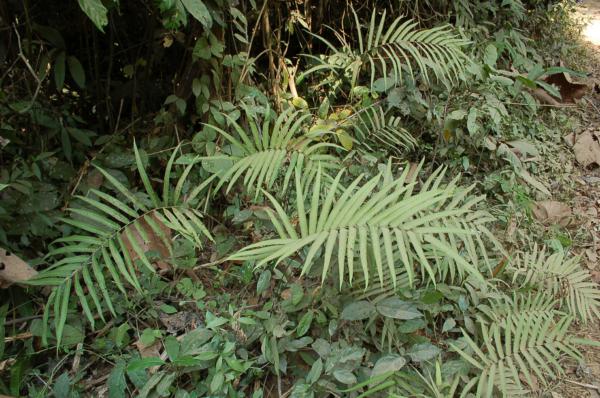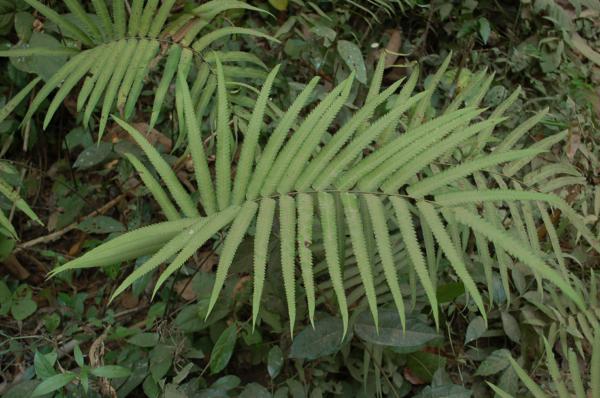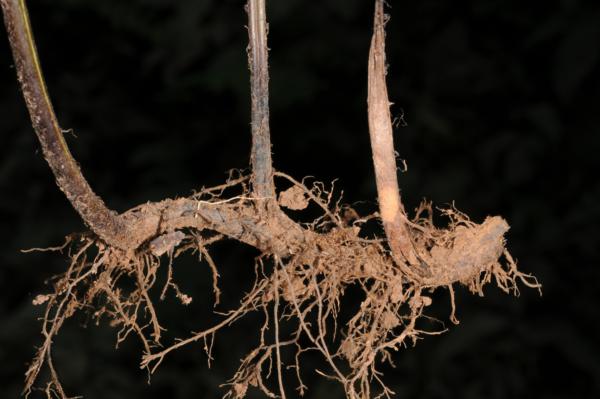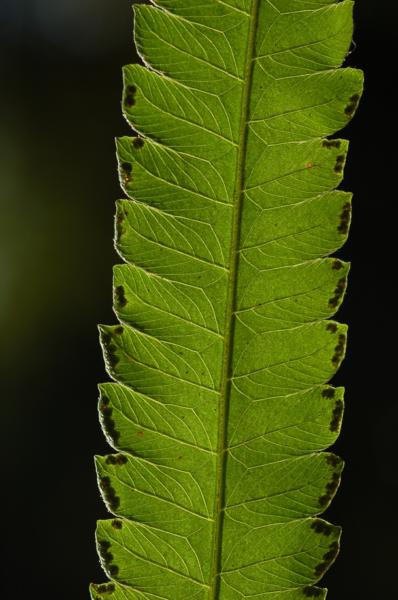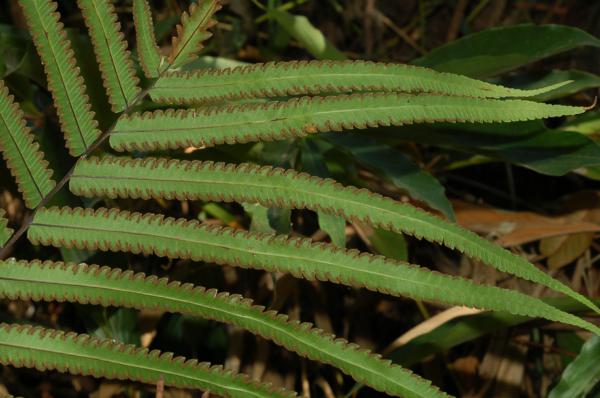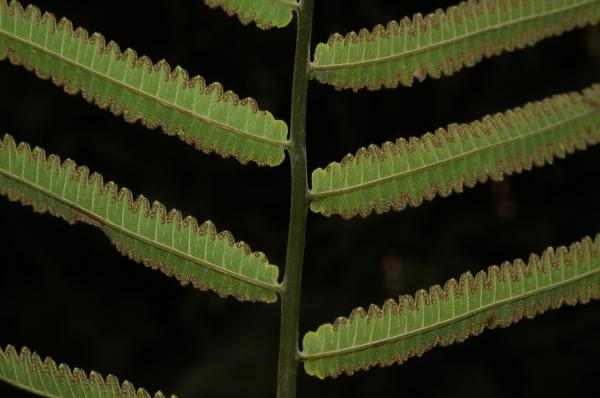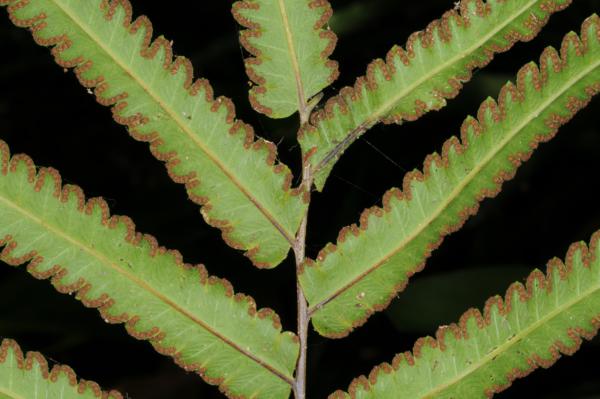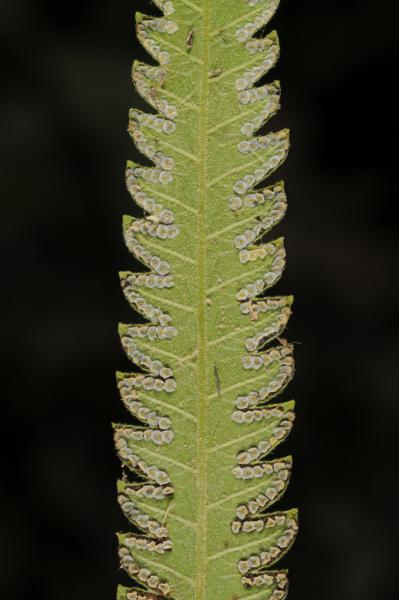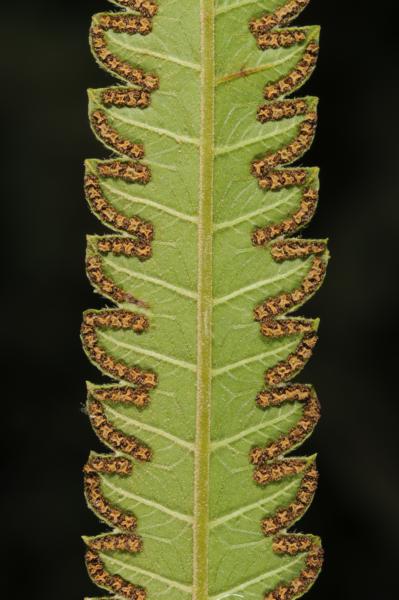
Cyclosorus terminans (J.Sm. ex Hook.) Panigrahi
Family
Thelypteridaceae
Nomenclature
Cyclosorus terminans (J.Sm. ex Hook.) Panigrahi, Pl. Sci. Res. (India) 20(1–2): 25. 1998. – Nephrodium terminans J.Sm. ex Hook., Sp. Fil. 4: 73, 1862. – Amphineuron terminans (J.Sm. ex Hook.) Holttum, Amer. Fern J. 63: 82. 1973; Holttum, Blumea 23: 207. 1977; Holttum, Fl. Males., Ser. II, Pterid. 1: 545, f. 19a. 1982 [‘1981’]; Boonkerd & Pollawatn, Pterid. Thailand: 219. 2000. – Thelypteris terminans (J.Sm. ex Hook.) Tagawa & K.Iwats., Acta Phytotax. Geobot. 26: 169. 1975; Tagawa & K.Iwats., Fl. Thailand 3: 432. 1988. – Amblovenatum terminans (Hook.) J.P.Roux, Strelitzia 23: 201. 2009. – Type: Wallich 386, Burma, Kamoun (= Kumon) (K).
Nephrodium pteroides auct. non (Retz.) J.Sm.: Bedd., Handb. Ferns Brit. India: 269. 1883; Ostenfeld, Bull. Herb. Boiss. II. 5: 721. 1905; Hosseus, Beih. Bot. Centralbl. 28(2): 365. 1911; E.Smith, J. Siam Soc. Nat. Hist. Suppl. 8: 5. 1929. – Dryopteris pteroides auct. non (Retz.) Kuntze .: C.Chr., Contr. U.S. Natl. Herb. 26: 184. 1931.
Cyclosorus interruptus auct. non (Willd.) H.Ito: Ching, Bull. Fan Mem. Inst. Biol. 8: 184. 1938; Tardieu & C.Chr., Fl. Indo-Chine 7(2) 397. 1941; Holttum, Rev. Fl. Malaya ed. 1, 2: 262, f. 149. 1955 [‘1954’]; Holttum, Dansk Bot. Ark. 20: 23. 1961. – Thelypteris interrupta auct. non (Willd.) K.Iwats.: Tagawa & K.Iwats., SouthE. Asian Stud. 3(3): 79. 1965; Tagawa & K.Iwats., SouthE. Asian Stud. 5: 68. 1967.
Cyclosorus extensus auct. non (Blume) Ching: Holttum, Dansk Bot. Ark. 20: 23. 1961.
Thelypteris wagneri Fosberg & Sachet, Smithsonian Contr. Bot. 8: 6. 1972.
Description
Rhizome long creeping, about 1 cm diam.; scales narrow, brown, up to 10 by 0.8 mm, hairy. Stipes 37–84 cm long, stramineous with dark scaly base, pubescent. Laminae oblong-lanceolate, acute at apex, 42–80 by 30–60 cm; lateral pinnae 11–30 pairs, basal pinnae not or little reduced, patent to ascending, lower ones linear, straight, gradually narrowing towards long-acuminate apex, cuneate and shortly stalked at base, 15.5–30 by 1.2–2 cm, lobed to half-way to costa; segments oblong, oblique, round to moderately acute at apex, entire; papyraceous, green; veins pinnate, veinlets simple, basal 1–1.5 pairs uniting with those of the next group below sinus; minutely hairy on veinlets above and beneath, minutely hairy or glabrous on lamina between veins, sessile spherical yellow glands on veinlets and lamina near apex of lobes. Sori confined to upper part of segments, often hollowed; indusia persistent, hairy, sometimes also with yellow spherical glands.
Distribution in Thailand
Common all over Thailand.
Distribution in Cambodia
Mondulkiri.
Wider Distribution
Tropics of Asia to Australia (Queensland).
Ecology
Common on rather dry mountain slopes in forests at low or medium altitudes up to 1200 m alt.
Proposed IUCN Conservation Assessment
Least Concern (LC). This species is widespread and not under any known threat.
Voucher specimens - Thailand
Middleton et al. 4729, Chachoengsao, Ang Rue Nai Wildlife Sanctuary (E); Middleton et al. 4609, Trat, Ko Chang, Thanmagon Waterfall (E); Middleton et al. 4631, Trat, Ko Chang, Trail from Khlong Phlu Ranger Station (E); Middleton et al. 4381, Nakhon Si Thammarat, Khao Luang National Park (E).
Voucher specimens - Cambodia
Long et al. CL430, Mondulkiri, close to Bousra Waterwall (P).
Habit
Habit
Rhizome
Venation
Pinnae
Lower surface of rachis and pinnae
Lower surface of lamina
Young sori
Mature sori
Site hosted by the Royal Botanic Garden Edinburgh. Content managed by Stuart Lindsay, Gardens by the Bay, Singapore and David Middleton, Singapore Botanic Gardens. Last updated 24 January 2012
